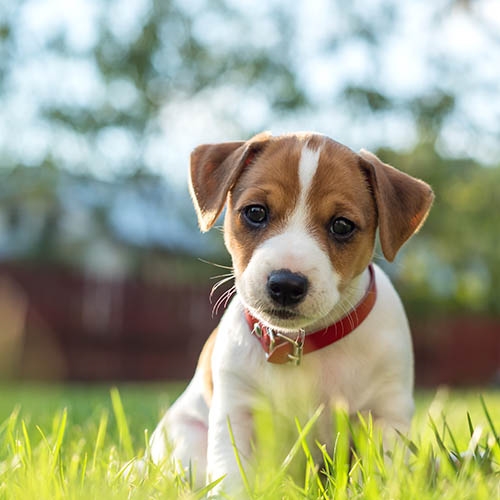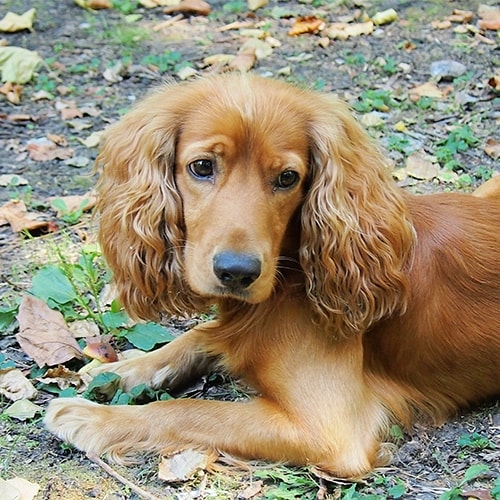
The royal family’s love of dogs is no secret, with many of them having a loyal four-legged friend by their side while performing their duty – and King Charles is no exception.
Vet Nurse, Shauna Walsh, at PDSA, the vet charity for pets in need, has compiled everything you need to know about some of the royal family’s favourite breeds – from exercise and grooming, to potential breed-related health concerns.
Shauna said: “If you’re thinking of bringing a new dog into your family, then it’s important to understand their breeding background; as even crossbreeds can have lifelong health conditions that can impact on your pets’ lives and yours, as their guardian. Some breeds are more high maintenance than others, so doing your research can help you to recognise the level of commitment that your pet will bring.”
1. Jack Russell Terrier

With a new monarch comes new furry faces around the palace, as King Charles and Camilla, Queen Consort, bring with them their two rescue Jack Russell Terriers, Bluebell and Beth.
Traditionally a working breed, these clever and lively little dogs love to run and chase, so require an active household where they can get plenty of exercise to prevent them from becoming bored. While they may be short in stature, these pooches can jump high, they’re also agile and adaptable and can also squeeze through tight spaces – a secure, high fence is therefore essential to prevent them from escaping.
As with all dogs, it is best to start positive, reward-based training as early as possible. Jack Russell Terriers are quick learners, and need to keep their sharp minds just as active as their paws. This will also help with excessive barking – Jack Russell Terriers can be known for having a persistent bark, despite their petite size!
The Jack Russell Terrier can be a short-coated breed that requires minimal grooming or wire-haired. A weekly brush is typically enough to keep their coats looking healthy, with more maintenance required in the summer when shedding. For those wire-haired terriers, they may need to visit the groomer a couple of times a year to hand strip the excess hair, to prevent matting.
It’s important to note that the breed can be prone to certain health conditions including primary lens luxation – a painful eye condition that can lead to blindness. They are also known to suffer from late onset ataxia – a brain condition that causes a loss of balance and co-ordination. Most commonly, the breed is prone to luxating patellas, meaning their kneecaps may slip temporarily out of place.
2. Welsh Corgi

One of the most well-known royally-loved breeds, famously championed by Queen Elizabeth II, is the Welsh Corgi. During her reign, the Queen owned more than thirty of these friendly, happy, and fun-loving dogs.
With active roots, having historically been used as herding dogs on farms, Welsh Corgis do have naturally high energy levels despite their short legs so need plenty of exercise every day. Due to their herding background, they are also likely to try and herd their owners, which is why training and early socialisation is very important.
Common health conditions that are linked to Welsh Corgis include hip dysplasia, which can lead to arthritis. They are also prone to intervertebral disc disease due to their longer backs and short legs and their conformation puts added strain onto the vertebra in their spine, causing the disc to slip or rupture. They are also at risk of developing epilepsy and cataracts.
These outgoing pups require brushing two-three times per week to help remove any dead hair from their water-resistant coat.
3. Cocker Spaniel

These happy pooches with very waggy tails are a known favourite of Prince and Princess of Wales. Originally bred as gun dogs, Cocker Spaniels have become a popular family pet as they are typically people-orientated and love company. Their sociable nature means that like all dogs, they crave company. They can be at risk of developing separation anxiety when left alone and therefore ideally need someone around to keep them company most of the time.
With the right early experiences, Cocker Spaniels are often patient, kind and gentle, which is why many families choose the breed. Remember, children and dogs should never be left together unsupervised.
Because of their history as working dogs, Cocker Spaniels need plenty of consistent exercise to keep them healthy both mentally and physically, and stop them from becoming bored. This can be made up of a combination of walks, playtime, games, and training sessions where they can burn off any extra energy.
Aside from removing stray twigs and leaves from their coat after a walk, Cocker Spaniels need a daily brush to keep on top of dead hair and prevent matting. Many owners choose to have their cocker spaniels clipped, to keep them neat and tidy. Trimming ears and clipping the underside of the ears can help prevent matting and promotes air circulation around the ear.
Like any breed, Cocker Spaniels have a few health conditions they are prone to developing which include hip dysplasia, ear infections, and allergies that can cause itchy skin.
4. Beagle

One of two breeds owned by the Duke and Duchess of Sussex, Beagles are loving and sociable dogs who enjoy nothing more than being involved in everything that is going on around them. The breed has historically been used as scent hounds for tracking, but due to their size and adaptability they have more recently become a popular family pet.
Due to their working history, Beagles are best suited to active households where they can get all the plentiful exercise they need each day. As well as their regular walks, they will also need playtime, training, and free time in the garden to use their nose. They are however good escape artists and have been known to dig, climb, or wiggle free, especially if they catch the scent of something interesting, so it is important to make sure your garden is secure before bringing your furry friend home.
As a breed, the Beagle can be more prone to developing health conditions such as epilepsy, hypothyroidism and meningitis. There are also a number of genetic conditions that you should make sure the parents have been screened for before taking on a Beagle.
5. Norfolk Terrier

Princess Beatrice and Princess Eugenie are both fond of these curious dogs, having owned many Norfolk Terriers over the years.
As members of the terrier group, these dogs were originally bred for hunting and therefore can be known to pursue foxes, badgers, and rats both above and below ground. They are hardy and brave dogs who have a strong prey drive and instinct to explore, meaning they may need more encouragement during their training to make sure they have a firm recall. This means they have high energy levels and will require at least an hour of exercise a day.
Norfolk Terriers tend to have a wiry coat which needs brushing once a week and hand stripping three to four times a year to remove dead fur and keep them looking healthy.
As a breed, the Norfolk Terrier is predisposed to hip dysplasia, skin problems, and glaucoma.
If you are considering one of these royal favourites, see our guide for choosing the right pet for you at: https://www.pdsa.org.uk/choosingapet